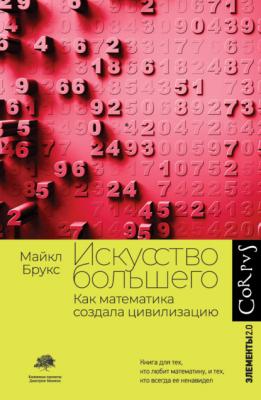Искусство большего. Как математика создала цивилизацию. Майкл Брукс
Читать онлайн.| Название | Искусство большего. Как математика создала цивилизацию |
|---|---|
| Автор произведения | Майкл Брукс |
| Жанр | |
| Серия | Элементы 2.0 |
| Издательство | |
| Год выпуска | 2021 |
| isbn | 978-5-17-148081-3 |
23
Последовательность Фибоначчи начинается с 0 и 1, а каждое следующее число в ней получается путем сложения двух предыдущих. Первые 12 чисел таковы: 0, 1, 1, 2, 3, 5, 8, 13, 21, 34, 55 и 89.
24
Pascal B. Pensées, www.gutenberg.org/files/18269/18269-h/18269-h.htm. Перевод Ю. Гинзбург.
25
Wallis J. A Treatise of Algebra, Both Historical and Practical. Philosophical Transactions of the Royal Society of London. 15, no. 173 (1685): 1095–1106.
26
Seife C. Zero: The Biography of a Dangerous Idea. New York: Viking, 2000.
27
Перевод цитируется по изданию: Мухаммад ибн Муса ал-Хорезми. Математические трактаты. Ташкент: Издательство “Фан” Узбекской ССР, 1983.
28
Kaplan R. The Nothing That Is: a natural history of zero. Oxford: Oxford University Press, 2000.
29
Physics by Aristotle, http://classics.mit.edu/Aristotle/physics.html.
30
Weng J. et al. The effects of long-term abacus training on topological properties of brain functional networks. Scientific Reports. 7, no. 1 (2017): 8862.
31
Goldthwaite R. The practice and culture of accounting in Renaissance Florence. Enterprise & Society. 16, no. 3 (2015): 611–47.
32
Gleeson-White J. Double Entry: how the merchants of Venice created modern finance. New York: W. W. Norton & Co, 2012.
33
Schemmen M. The Rules of Double-Entry Bookkeeping (a Translation of Particularis de Computis et Scripturis). IICPA Publications, 1494. “Сумма” Пачоли цитируется в переводе Э. Вальденберга.
